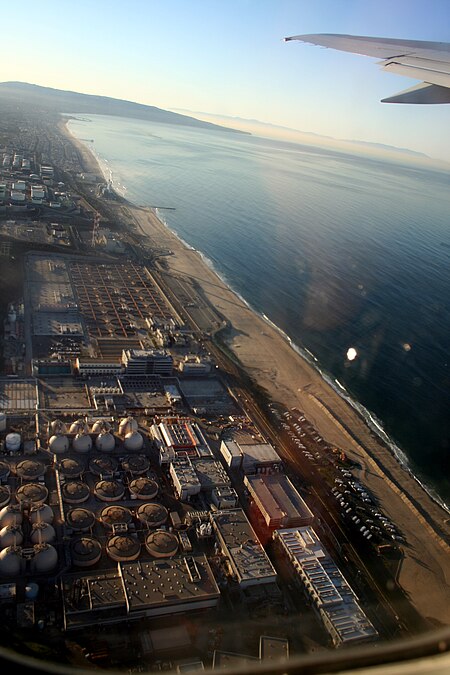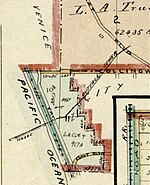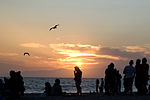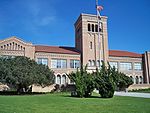Hyperion sewage treatment plant

The Hyperion Water Reclamation Plant is a sewage treatment plant in southwest Los Angeles, California, next to Dockweiler State Beach on Santa Monica Bay. The plant is the largest sewage treatment facility in the Los Angeles Metropolitan Area and one of the largest plants in the world. Hyperion is operated by the City of Los Angeles, Department of Public Works, and the Bureau of Sanitation. Hyperion is the largest sewage plant by volume west of the Mississippi River.Los Angeles City Sanitation (LASAN) operates the largest wastewater collection system in the US, serving a population of four million within a 600 square miles (1,600 km2) service area. The city's more than 6,700 miles (10,800 km) of public sewers convey 400 million gallons per day of flow from customers to its four plants.The city's wastewater system - sewers and treatment plants - operates 24 hours a day, 365 days a year to serve the needs of more than four million customers in Los Angeles, plus 29 contracting cities and agencies. There are ongoing construction projects to ensure service remains available to all of the residents in the City of Los Angeles.
Excerpt from the Wikipedia article Hyperion sewage treatment plant (License: CC BY-SA 3.0, Authors, Images).Hyperion sewage treatment plant
South Bay Bike Path, Los Angeles
Geographical coordinates (GPS) Address Nearby Places Show on map
Geographical coordinates (GPS)
| Latitude | Longitude |
|---|---|
| N 33.925 ° | E -118.42972222222 ° |
Address
Hyperion Wastewater Treatment Plant
South Bay Bike Path
90296 Los Angeles
California, United States
Open on Google Maps









